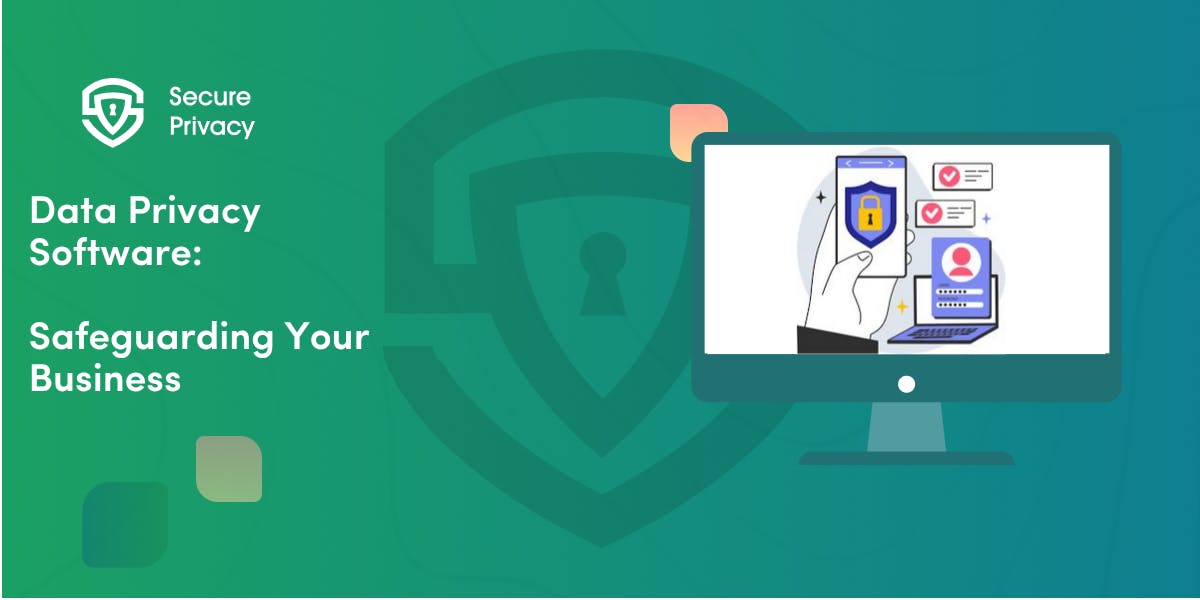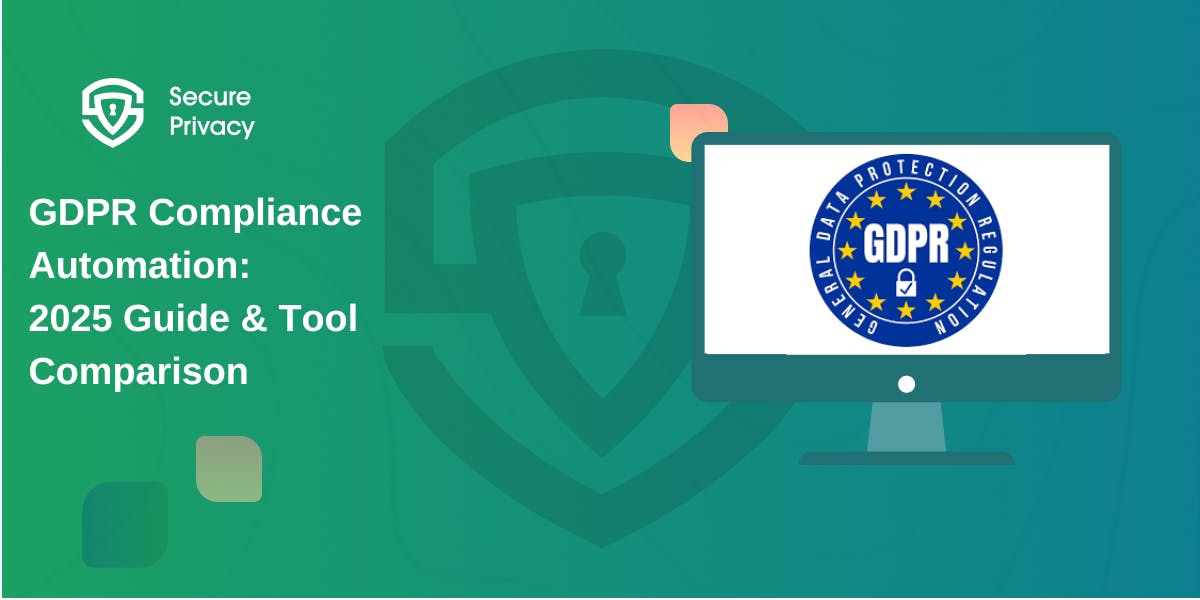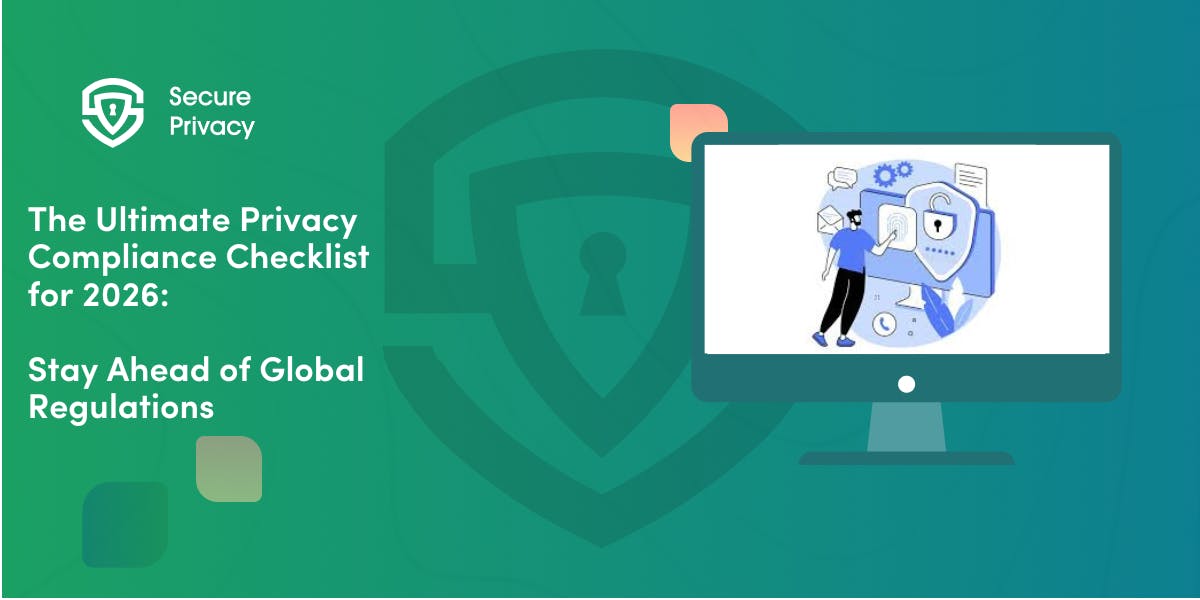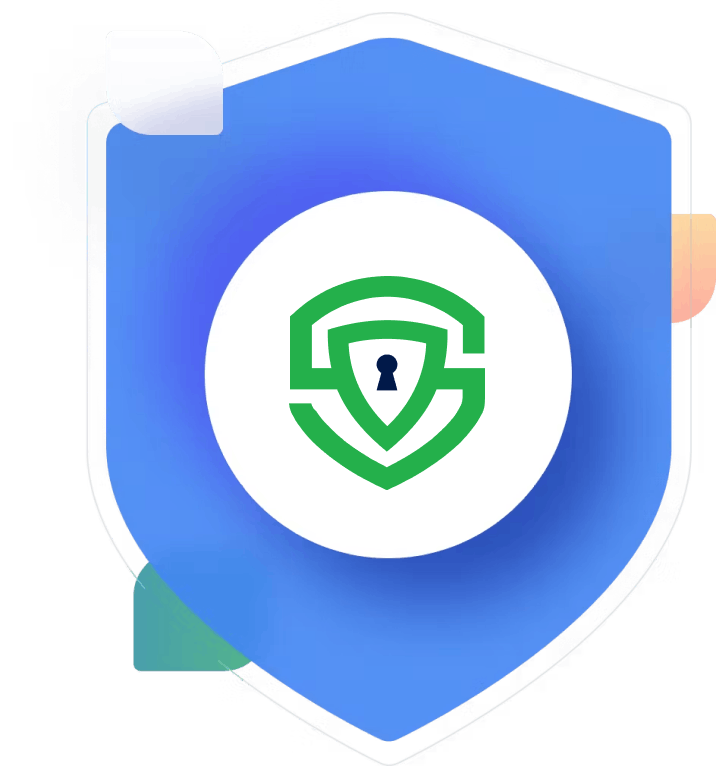Data Privacy Software: Safeguarding Your Business
Your compliance team just discovered personal data scattered across fifty different systems with no clear inventory. A data subject access request arrived yesterday requiring response within thirty days, but manually searching through databases, CRM systems, and cloud storage would take months. Meanwhile, eight new US state privacy laws took effect this year alone, and you're not sure which apply to your business.
Data privacy software provides integrated technology platforms that help organizations manage, protect, and govern personal data throughout its lifecycle while maintaining compliance with global privacy regulations. With the market projected to grow from $5.37 billion in 2025 to $45.13 billion by 2032, these solutions have evolved into mission-critical business infrastructure. Organizations using automated compliance save an average of $2.2 million in breach costs while increasing operational efficiency by 33%.
This guide walks you through understanding data privacy software capabilities, evaluating leading solutions, and implementing effective privacy programs to protect data while building customer trust.
What Data Privacy Software Does for Your Organization
Data privacy software encompasses integrated platforms that automate critical privacy operations across the complete data lifecycle. These solutions address challenges that manual processes cannot solve at scale—discovering personal data across complex technology stacks, managing consent preferences, fulfilling data subject rights requests within regulatory timeframes, and maintaining comprehensive audit trails.
The technology operates across three foundational layers. The data intelligence layer automatically scans databases, documents, code repositories, and cloud storage to identify and classify personally identifiable information using machine learning algorithms that detect hidden data patterns.
The governance and control layer enforces data handling rules, access controls, retention schedules, and deletion workflows across your technology stack. This layer manages consent preferences, tracks data lineage, maintains audit trails, and orchestrates privacy enforcement through API integrations with marketing platforms, CRM systems, and analytics tools.
The compliance and reporting layer generates regulatory documentation automatically, including GDPR Records of Processing Activities, privacy notices, data protection impact assessments, and breach notification reports. Real-time dashboards provide visibility into compliance posture, consent rates, request fulfillment timelines, and policy violations.
Data protection laws now cover 79% of the global population, with enforcement authorities deploying automated scanning to audit over 30,000 websites simultaneously. Manual privacy management costs over $1 million annually per 5 million website visitors just for processing data subject access requests. Organizations with mature governance programs are twenty times more likely to meet regulatory compliance requirements compared to those relying on manual processes.
Understanding GDPR Compliance Software
GDPR compliance software addresses the European Union's General Data Protection Regulation—the world's most comprehensive privacy framework affecting any company processing EU residents' data. The GDPR compliance software market, estimated at $5 billion in 2025, continues growing at 15% annually.
Article 30 Record of Processing Activities requires comprehensive inventories documenting processing purposes, data categories, recipients, retention periods, and security measures. Automated platforms dynamically update these records as systems change.
Data subject rights automation addresses Articles 15-22 requiring organizations to fulfill access, rectification, erasure, portability, and objection requests. When individuals submit requests, GDPR software automatically searches connected systems, compiles comprehensive reports, and generates responses in required formats.
Article 35 Data Protection Impact Assessments require structured evaluation of high-risk processing operations. GDPR platforms provide templated frameworks that guide assessment completion, suggest risk mitigation measures, and maintain historical records demonstrating due diligence.
Breach notification capabilities ensure compliance with Articles 33-34 requiring notification to supervisory authorities within 72 hours. Automated incident workflows detect potential breaches, assess severity, generate required notifications using regulatory templates, and maintain documentation proving timely compliance.
Navigating CCPA and Multi-State Requirements
The California Consumer Privacy Act established America's most stringent state-level privacy framework with distinct requirements diverging from GDPR principles. CCPA data protection tools must address technical requirements including prominent "Do Not Sell or Share My Personal Information" links and automated recognition of Global Privacy Control signals.
Sixteen states now enforce comprehensive privacy frameworks with eight new laws taking effect in 2025. Delaware, Iowa, Nebraska, New Hampshire, New Jersey, Tennessee, Minnesota, and Maryland each impose distinct requirements that organizations must navigate simultaneously.
CCPA defines twelve categories of sensitive data including biometric information, geolocation data, health information, and racial origin requiring separate consent mechanisms. Organizations must implement systems that detect sensitive information collection, present appropriate consent interfaces, and enforce processing limitations.
Multi-jurisdictional compliance strategies have become essential. Organizations serving national markets increasingly identify the most stringent requirements across applicable jurisdictions and implement those as baseline standards, creating consistent privacy practices while ensuring compliance without maintaining separate systems for each jurisdiction.
Comparing Leading Data Privacy Management Platforms
OneTrust maintains its position as the comprehensive enterprise standard. However, pricing typically ranges from $50,000 to $250,000 annually.
TrustArc specializes in privacy-specific operations, finishing four consecutive quarters as a top-rated vendor. Its strength lies in cookie consent management, data subject access request automation, and privacy impact assessments with flexible modular pricing.
Zendata targets startups and SMBs with no-code implementation requiring no technical expertise. Its AI-powered PII detection and automated compliance scanning provide accessibility for resource-constrained organizations.
CookieYes and CookieScript focus specifically on consent management with cookie scanning, banner customization, and consent logging. Their narrow scope makes them popular with small-to-medium websites seeking basic consent compliance.
Secure Privacy stands out as a modern, automation-first alternative to traditional platforms. It combines enterprise-grade compliance capabilities with the accessibility and pricing flexibility needed by marketing teams, agencies, and SMBs alike. Its all-in-one platform automates cookie consent, privacy policy generation, DSAR workflows, and multi-language compliance across global regulations including GDPR, CCPA/CPRA, LGPD, and POPIA.
Unlike complex enterprise suites, Secure Privacy deploys in minutes, integrates seamlessly with marketing tools and analytics platforms, and provides agencies with white-label dashboards and client reporting to prove compliance. This balance of simplicity, automation, and global coverage makes Secure Privacy an ideal choice for organizations seeking robust privacy governance without enterprise overhead.
Selection criteria should evaluate regulatory coverage matching your geographic footprint, integration capabilities with existing technology, implementation timeline and resource requirements, scalability to support growth, automation sophistication, reporting capabilities, and total cost of ownership.
Leveraging AI-Powered Privacy Technologies
AI-powered data privacy tools leverage machine learning, natural language processing, and automated decision-making to enhance efficiency and scalability. This segment experiences rapid growth as organizations manage exponentially increasing data volumes while navigating complex regulatory requirements.
Intelligent data discovery and classification applies machine learning to automatically identify, categorize, and label personal data across systems. Advanced solutions reduce manual classification effort by 80%, discovering hidden data that traditional systems miss.
Automated privacy impact assessments leverage AI to analyze processing activities, identify high-risk operations, and generate preliminary recommendations based on regulatory criteria. These tools expedite assessment workflows while ensuring consistency.
Predictive risk analytics uses machine learning to predict breach probabilities, identify compliance gaps before audits, and prioritize remediation efforts. AI-powered platforms enable proactive risk mitigation rather than reactive responses.
Consent management optimization employs AI to analyze user behavior and recommend design improvements. Leading platforms use machine learning to identify friction points and suggest strategies that can increase consent rates by 200% while maintaining compliance.
Organizations must address the dual imperative of using AI to enhance privacy operations while governing AI's own privacy risks, including algorithmic transparency requirements, training data bias, explainability challenges, and data minimization tensions.
Implementing Privacy-Enhancing Technologies
Privacy-enhancing technologies enable data analysis and collaboration while protecting individual privacy through cryptographic techniques. The PETs market projects growth from $3.32 billion in 2024 to $25.8 billion by 2027.
Homomorphic encryption enables computations on encrypted data without decryption, allowing secure analysis while maintaining confidentiality. Computational efficiency improvements in 2025 are making fully homomorphic encryption increasingly practical.
Federated learning trains AI models across decentralized data sources without centralizing sensitive information. Large organizations are rapidly adopting federated approaches, with 60% projected to use at least one privacy-enhancing computation technique by end of 2025.
Confidential computing uses secure enclave technology ensuring data remains encrypted even during processing. Major companies deploy confidential computing for secure data collaboration without exposing raw data.
Differential privacy adds mathematical noise to aggregate data releases, enabling statistical analysis while preventing individual identification. The technique provides mathematical guarantees about privacy protection while maintaining statistical validity.
Synthetic data generation creates artificial datasets preserving statistical properties without containing actual personal information, enabling AI training and testing without privacy risks.
Building Effective Privacy Programs
Successful privacy program implementation encompasses organizational culture, governance structures, skills development, and continuous improvement. Organizations with mature governance programs report 20% higher customer satisfaction and 20 times greater likelihood of meeting compliance requirements.
Executive sponsorship proves essential. Board-level oversight demonstrates organizational commitment, ensures adequate resource allocation, and elevates privacy from legal compliance to strategic business priority.
Cross-functional governance creates coordination between legal, technology, security, marketing, and business operations. Privacy governance committees should establish compliance strategies, review program effectiveness, approve policy changes, and escalate significant risks.
Privacy performance metrics should track data subject request response times, consent acceptance rates, vendor compliance assessment completion, training completion percentages, and incident response times.
Skills development requires ongoing investment. Organizations face widespread talent shortages, with 54% citing lack of skilled personnel and 60% reporting data literacy issues. Formal training programs should address role-specific requirements across development, marketing, customer service, and leadership teams.
Taking Action on Privacy Software Selection
Implementing data privacy software requires comprehensive gap analysis evaluating current privacy practices against regulatory requirements across applicable jurisdictions. Assessment should identify data processing activities requiring privacy controls, systems storing personal information without governance, manual processes creating compliance risk, and regulatory obligations not currently satisfied.
Technology selection should prioritize solutions matching organizational capabilities. Small businesses may succeed with focused consent management platforms. Mid-market organizations benefit from integrated privacy management platforms. Enterprise organizations require comprehensive solutions providing advanced data discovery and cross-jurisdictional compliance management.
Implementation planning must allocate sufficient resources and realistic timelines. Privacy software deployment requires coordination across IT, legal, compliance, security, and business teams. Enterprise implementations often span months through full integration with existing systems.
Vendor evaluation should assess software capabilities, implementation support, ongoing maintenance, product roadmap alignment, integration ecosystem, and total cost of ownership. Organizations should request demonstrations using actual data and use cases, speak with existing customers in similar industries, and evaluate vendor stability.
Remember that data privacy software serves the fundamental objective of respecting user privacy while enabling sustainable business operations. Technical capabilities and regulatory compliance create the foundation, but genuine commitment to privacy principles differentiates organizations viewing compliance as obligation from those recognizing privacy as competitive advantage building customer trust in an increasingly privacy-conscious marketplace.
Get Started For Free with the
#1 Cookie Consent Platform.
No credit card required

Data Privacy Software: Safeguarding Your Business
Your compliance team just discovered personal data scattered across fifty different systems with no clear inventory. A data subject access request arrived yesterday requiring response within thirty days, but manually searching through databases, CRM systems, and cloud storage would take months. Meanwhile, eight new US state privacy laws took effect this year alone, and you're not sure which apply to your business.
- Legal & News
- Data Protection

GDPR Compliance Automation: Complete Guide & Tool Comparison
Your privacy team is drowning in manual GDPR workflows. Data subject access requests pile up for weeks. Data mapping takes months instead of minutes. Your spreadsheet-based consent records can't scale to millions of users. Meanwhile, European regulators issued €1.2 billion in GDPR fines last year alone, and your current compliance approach can't keep pace with enforcement intensity or business growth.

2026 Privacy Compliance Roadmap: Comprehensive Checklist for Your Business
Your compliance team just received another regulatory update notification. This time it's about new CCPA cybersecurity audit requirements, EU AI Act enforcement deadlines, and state privacy laws taking effect January 1st. The regulatory landscape keeps expanding, and falling behind isn't an option when penalties reach millions of dollars.
- Legal & News
- Data Protection

